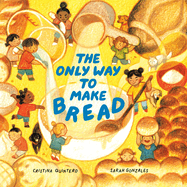
| Publisher: | Tundra Books | |
| Genre: | Cooking & Food, Family, Juvenile Fiction, Multigenerational, Diversity & Multicultural | |
| ISBN: | 9780735271760 | |
| Pub Date: | October 2023 | |
| Price: | $18.99 |
| Children's & Young Adult |
by Cristina Quintero, illust. by Sarah Gonzales
Food nourishes life and helps us preserve traditions and build community. Cristina Quintero's cozy debut, The Only Way to Make Bread, illustrated in warm, comforting tones by Sarah Gonzales (Maribel's Year), portrays children experiencing both through food culture. A large group of adults and children meet in a kitchen to bake, fry, steam, and grill a diverse range of breads for an afternoon picnic. Each type of bread is prepared by adults and children working together and involves much more than edible ingredients: specific cookware, techniques, and textures are a few of the items noted in Quintero's direct text.
Quintero, a first-generation Colombian Canadian, aimed to "highlight the everyday joy that is created within immigrant communities" in this picture book. An earthy palette in hues of green, brown, gold, and copper dominate Gonzalez's mixed-media illustrations. The grainy depth of the colored-pencil shading creates a scrapbook aesthetic, like a vintage postcard collection. The art, combined with Quintero's graceful text, results in a behind-the-scenes glimpse into the ordinary, love-filled lives of individuals from various cultures. --Rachel Werner, author and teaching artist at Hugo House, Lighthouse Writers Workshop, and The Loft Literary Center
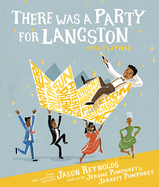
| Publisher: | Atheneum | |
| Genre: | United States - African American & Black, Biography & Autobiography, People & Places, Literary, Curiosities & Wonders, Juvenile Nonfiction | |
| ISBN: | 9781534439443 | |
| Pub Date: | October 2023 | |
| Price: | $18.99 |
| Children's & Young Adult |
by Jason Reynolds, illust. by Jerome Pumphrey, Jarrett Pumphrey
Three creators at the toe-tapping tip-toppest of their game deliver a soulful tribute to a beloved poet, essayist, and cultural leader in the melodic There Was a Party for Langston, written by Jason Reynolds (Stuntboy, in the Meantime; Ghost) and illustrated by siblings Jerome Pumphrey and Jarrett Pumphrey (The Old Truck).
The grand opening of the Schomburg Center's auditorium inspires a "jam in Harlem to celebrate the word-making man--Langston, the king of letters." Langston Hughes made words dance on the page and, on this February 1991 evening, literary luminaries boogie the night away in his honor. "All the best word makers were there," but two guests take center stage: Hughes's "word-children," Maya Angelou and Amiri Baraka.
Former National Ambassador for Young People's Literature Reynolds makes his picture book debut in this joyful and rhythmic triumph--a Kids Indie Next List pick. The text is reverential yet jolly; "Langston's language-laughter tickle[s]" readers without ever losing focus on Hughes's profound literary impact. This boisterous read-aloud is equal parts endearing homage to and history lesson about a literary giant, and it is truly something to celebrate. --Kit Ballenger, youth librarian, Help Your Shelf
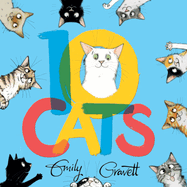
| Publisher: | Boxer Books | |
| Genre: | Concepts, Cats, Animals, Counting & Numbers, Imagination & Play, Juvenile Fiction | |
| ISBN: | 9781914912580 | |
| Pub Date: | May 2023 | |
| Price: | $16.99 |
| Children's & Young Adult |
by Emily Gravett
British author/illustrator Emily Gravett's 10 Cats is a nearly wordless picture book full of bright hues and silly antics. On the first spread of this Kids Indie Next List title, readers meet the eponymous 10 cats: one snowy-white mother, and nine relatively courteous kittens against a white background. From "1 white cat" to "10 multicolored cats," though, the scene grows progressively more chaotic--and polychromatic. When Mama dozes off, her offspring begin to get into mischief with a series of red, yellow, and blue paint cans.
Gravett (Bear and Hare Share) is brilliant at using white space to paint a witty visual story. Her pencil and watercolor artwork is lovely, and should appeal to all ages. 10 Cats is more than fun and games, too. In the process of wreaking havoc, the playful kittens help readers learn about colors, patterns, and numbers. Gravett's cheery primary shades (which turn into secondaries as the bedlam advances) bring to mind the zany 1960 classic Put Me in the Zoo by Robert Lopshire. --Emilie Coulter, freelance writer and editor
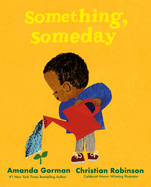
| Publisher: | Viking | |
| Genre: | United States - African American & Black, Values & Virtues, People & Places, Social Themes, Juvenile Fiction, Prejudice & Racism | |
| ISBN: | 9780593203255 | |
| Pub Date: | September 2023 | |
| Price: | $18.99 |
| Children's & Young Adult |
by Amanda Gorman, illust. by Christian Robinson
In Something, Someday, Amanda Gorman (Change Sings: A Children's Anthem) tells one story with her words while Christian Robinson (Last Stop on Market Street illustrator) suggests another with his pictures. Intertwining text and art on the same page results in an exquisitely complementary achievement that amplifies each half to produce a remarkable whole.
Change is at the heart of Gorman's verses here. Despite discouragement, she eschews sadness, fear, confusion, and anger. Finding "someone who will hope with you," who will work together toward "something that makes you feel/ Hopeful, happy, and loved," can make dreams come true. Caldecott Honoree Robinson solidifies Gorman's words with a glorious, brilliantly specific narrative. His signature paint and collage art is dynamic, with visible brushstrokes that add layered texture to walls, clothing, and leaves. Each page announces and celebrates the diversity among the neighbors.
Gorman and Robinson are both leaders in their respective fields. Their joint creation--a Kids Indie Next List pick--becomes a powerful antidote to doubters and naysayers, emphatically bearing witness that "the tiniest things/ Make a huge difference." --Terry Hong
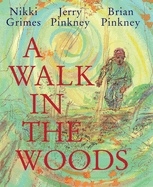
| Publisher: | Neal Porter Books | |
| Genre: | Death, Grief, Bereavement, Parents, Family, Sports & Recreation, Social Themes, Camping & Outdoor Activities, Juvenile Fiction | |
| ISBN: | 9780823449651 | |
| Pub Date: | September 2023 | |
| Price: | $18.99 |
| Children's & Young Adult |
by Nikki Grimes, illust. by Jerry Pinkney, Brian Pinkney
The joy in discovering that three greats of children's literature--Nikki Grimes, Jerry Pinkney, and Brian Pinkney--collaborated on a picture book is tempered only by the fact that one of them is gone. Jerry Pinkney had created initial sketches for Grimes's tender and evocative picture book text, A Walk in the Woods. Brian Pinkney began to complete the illustrations, "just weeks after the passing of my beloved father," by adding watercolors (with a digital assist from his niece, illustrator Charnelle Pinkney Barlow).
As a reminder that life often imitates art, the story is about a boy grieving the death of his father. The child discovers a note his father left for him suggesting he take a walk in the woods to find "treasure." Grimes captures the woods' sensory delights with precision and lyricism: the "explosion of flight" of an eagle spreading its wings. To see Jerry Pinkney's sketches lit by Brian Pinkney's dazzling colors and swirling lines is wondrous. This exceptional story stands as a moving account of a Black boy finding solace in nature--but also serves as a marvelous tribute to Jerry Pinkney. --Julie Danielson, reviewer and copy editor
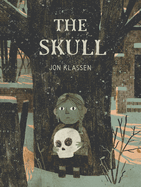
| Publisher: | Candlewick | |
| Genre: | Friendship, Country & Ethnic - General, Horror, Thrillers & Suspense, Social Themes, Juvenile Fiction, Fairy Tales & Folklore | |
| ISBN: | 9781536223361 | |
| Pub Date: | July 2023 | |
| Price: | $19.99 |
| Children's & Young Adult |
by Jon Klassen
Caldecott Medal-winning author/illustrator Jon Klassen takes an especially dark turn in an unconventional folktale for hardy early readers, The Skull. This morbid yet profoundly affectionate chapter book about a girl and her bony companion was chosen as the #1 Kids Indie Next List book for July/August 2023.
"One night, in the middle of the night, while everyone else was asleep, Otilla finally ran away." Otilla, arriving at a seemingly abandoned old home, is welcomed by its unexpected proprietor: a skull.
A note describes Klassen's fascinating inspiration, which came from an older retelling, and this unorthodox, five-part folktale tips heavily into Grimm sentiments. The tenebrous, digitally finished graphite-and-ink palette leans toward his work in The Dark (2013), while the unnerving plot evokes Klassen's calamitous The Rock from the Sky (2021). The gripping art melds brilliantly with emotionally hefty text to strike an overwhelmingly eerie and foreboding tone, which plays in exquisite contrast to the blooming solidarity between Otilla and the skull. Make no bones about it, this is a wholly distinctive and delightfully unsettling creation. --Kit Ballenger, youth librarian, Help Your Shelf
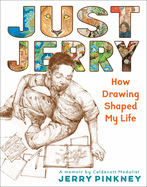
| Publisher: | Little, Brown Books for Young Readers | |
| Genre: | Biography & Autobiography, Drawing, United States - African American & Black, Art, People & Places, Careers, Social Topics, Juvenile Nonfiction, Prejudice & Racism | |
| ISBN: | 9780316383851 | |
| Pub Date: | January 2023 | |
| Price: | $17.99 |
| Children's & Young Adult |
by Jerry Pinkney
Jerry Pinkney's mother, knowing her son would make something of himself, dismissed those who teased him for not having a proper name--"Just 'Jerry' is enough." Not only was her prediction accurate, she inspired the title for her Caldecott-winning son's resplendent and candid memoir.
Pinkney (The Lion and the Mouse) wrote this memoir in the decade preceding his death at age 81 in 2021, but did not complete the art. Though using his unfinished drawings was not the original intent, the art is a perfect representation of a master artist in the making. Pinkney describes his adolescence as packed with challenges, and provides an authentic view of post-World War II-era Philadelphia. The author/illustrator brilliantly relates his experience with dyslexia at a time before anyone truly understood the learning disability, and humbly and honestly depicts his hurdles and how those difficulties empowered him and helped build his determination and passion. Just Jerry immerses readers in the life of a remarkable man who made his indelible mark on the world of illustration. Pinkney leaves a precious gift to readers with his final work. --Jen Forbus, freelancer
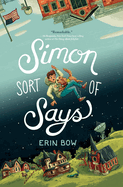
| Publisher: | Disney-Hyperion | |
| Genre: | Friendship, Humorous Stories, Death, Grief, Bereavement, Social Themes, Juvenile Fiction | |
| ISBN: | 9781368082853 | |
| Pub Date: | January 2023 | |
| Price: | $16.99 |
| Children's & Young Adult |
by Erin Bow
Escaping the memories of a traumatic event may be impossible, but in this poignant and remarkably funny National Book Award finalist and Kids Indie Next List title, Simon and his family hope to at least escape public attention.
Twelve-year-old Simon, his undertaker mom, and liturgical director dad move to Grin and Bear It, Nebr., a National Quiet Zone with "no internet and no cell phones." While Simon says that his family was "driven out [of their last town] by alpacas," the truth is that two years earlier, Simon was the only survivor of a shooting in his fifth-grade class. After a year of homeschooling, and--it's true--an unfortunate alpaca incident, Simon and his family seek a fresh start.
Simon Sort of Says is a droll coming-of-age story with hilarity and slapstick, gross-out facts, misunderstandings, and sweet friendships. It's also a literary feat accomplished with grace and sensitivity by author Erin Bow (The Scorpion Rules; Plain Kate). Readers are likely to fall hard for Simon, his friends and his family, every one of whom is worthy of a novel of their own. Simply put: Simon Sort of Says is extraordinary. --Emilie Coulter, freelance writer and editor
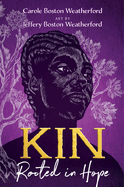
| Publisher: | Atheneum Books for Young Readers | |
| Genre: | United States - African American & Black, People & Places, United States - Civil War Period (1850-1877), Stories in Verse (see also Poetry), Juvenile Fiction, Historical | |
| ISBN: | 9781665913621 | |
| Pub Date: | September 2023 | |
| Price: | $18.99 |
| Children's & Young Adult |
by Carole Boston Weatherford, illust. by Jeffery Boston Weatherford
Coretta Scott King Award winner and National Book Award finalist Carole Boston Weatherford (Unspeakable) teams up once again with illustrator son Jeffery Boston Weatherford (You Can Fly) to explore their shared past and honor their enslaved ancestors through dignified poems and stunning artwork in Kin: Rooted in Hope.
Mother and son begin their narrative in 2016 at the Door of No Return, a trading post on Gorée, an island off the coast of Dakar, Senegal, where "captive Africans/ were held for weeks, months,/ until their numbers could fill/ a ship's belly." Next, they travel to the Wye House Plantation in Easton, Md., where their ancestors were enslaved by the Lloyd family. Carole Boston Weatherford's narrative follows both chronological history and the mother/son's trip to uncover the painful past.
Weatherford's rhythmic and artistic narrative, inspired by Alex Haley's Roots, brings to life her ancestors, the places they lived, and their oppression. Jeffery Boston Weatherford accompanies his mother's poems with expressive black-and-white scratchwork illustrations that add further weight, humanity, and grandeur to the history. --Natasha Harris, freelance reviewer
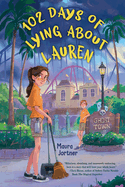
| Publisher: | Holiday House | |
| Genre: | Survival Stories, Parents, Poverty & Homelessness, Family, Social Themes, Juvenile Fiction, Action & Adventure | |
| ISBN: | 9780823453627 | |
| Pub Date: | June 2023 | |
| Price: | $18.99 |
| Children's & Young Adult |
by Maura Jortner
In Maura Jortner's funny and spirited debut novel, a stouthearted girl brings to bear all the cleverness, courage, and morality she can muster as she survives an impossible and terrifying situation.
One hundred and two days ago, 12-year-old Lauren's struggling mother brought her to "America's most famous amusement park" then snuck away while Lauren was on the Cursed Twirling Teacups ride. The clever tween snagged an employee shirt and a broken name badge. Since then, she has been sleeping in the Haunted House of Horrors by night and pretending to be a 16-year-old amusement park walkway sweeper by day. Lauren thinks she's managing reasonably well, but bad weather is coming, and her fragile pretense may not be able to withstand the storm.
Lauren's poignant, humorous first-person narrative immediately pulls readers onto her side, even as they suspect that her lifestyle is not sustainable. The vivid, remarkable behind-the-scenes details of Lauren's daily survival arrangements, along with well-developed characters, and a timely and realistic depiction of a family in crisis make 102 Days of Lying About Lauren both relevant and engrossing. --Emilie Coulter, freelance writer and editor
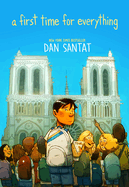
| Publisher: | First Second | |
| Genre: | Love & Romance, Friendship, General (see also headings under Social Themes), Family, Social Themes, Boys & Men, Juvenile Fiction | |
| ISBN: | 9781250851048 | |
| Pub Date: | February 2023 | |
| Price: | $14.99 |
| Children's & Young Adult |
by Dan Santat
Caldecott winner Dan Santat (The Adventures of Beekle; The Aquanaut) found his protagonist for the National Book Award-winning graphic novel A First Time for Everything in the mirror. Santat's illustrated memoir depicts his regularly awkward middle-school experiences, with a focus on the European trip that opened his eyes to the world beyond the discomforts of adolescence. Despite his best efforts at being inconspicuous in middle school, Dan was teased and bullied, so the idea of a school-sponsored trip to Europe terrified him. But the three-week trip turned out to be the kind of early-adolescent experience that would shape the man Dan became.
Santat's authentic voice and realistic characters will likely take older readers back to their own middle-school days while reminding current middle school-age readers of their own teen angst. Santat's splendidly expressive digital illustrations cement those emotional connections and highlight the humor even in the most agonizing of moments. He unpacks his transformational experience with vulnerability and raw honesty--the sincerity is heartening and the outcome inspiring. --Jen Forbus, freelancer

| Publisher: | Zest Books/Lerner | |
| Genre: | Biography & Autobiography, United States - African American & Black, People & Places, Young Adult Nonfiction, Poetry, Historical | |
| ISBN: | 9781728464077 | |
| Pub Date: | March 2023 | |
| Price: | $17.99 |
| Children's & Young Adult |
by Monica Edinger, Lesley Younge
The Interesting Narrative of the Life of Olaudah Equiano, or Gustavus Vassa, The African, published in 1789, is one of the earliest slave narratives. In Nearer My Freedom, Monica Edinger and Lesley Younge--former fourth grade co-teachers--brilliantly transform the autobiography into "found poems" by cutting and rearranging Equiano's original into verse: "Olaudah Equiano was an excellent writer, and using his autobiography as a source text helps preserve the eloquence of his voice while remixing it into poetry." Indeed, they open their adaptation with Equiano's searing address to the British Parliament, in which he presents "the following genuine/ Narrative" in support of abolition.
Throughout Equiano's narrative, the co-authors insert relevant history and context, such as Caribbean "Sugar Production" and "The Black Community in England." At book's end, they visually present the fascinating process of "Creating a Verse Version," parsing words and phrases directly from Equiano's prose. Further backmatter also includes a contextualizing timeline, glossary, extensive source notes and bibliography. Their deft transformation of Equiano's odyssey is well-equipped to inspire and empower new generations. --Terry Hong
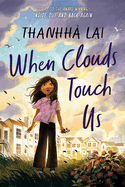
| Publisher: | HarperCollins | |
| Genre: | People & Places, Emigration & Immigration, United States - Asian American & Pacific Islander, General, Social Themes, Stories in Verse (see also Poetry), New Experience, Juvenile Fiction, Historical | |
| ISBN: | 9780063047006 | |
| Pub Date: | May 2023 | |
| Price: | $18.99 |
| Children's & Young Adult |
by Thanhhà Lại
When Clouds Touch Us, Thanhhà Lại's stand-alone sequel to Inside Out & Back Again, features the same kind of gorgeous prose and memorable moments that won the 2011 title the National Book Award and a Newbery Honor.
Two years ago, Hà and her family escaped the Vietnam War and found safety in Alabama. She is dismayed now at the prospect of moving to Texas, where the promise of better work and better pay awaits her mother and older brothers. In Texas, Hà makes a new friend and earns some money but still feels displaced. When she learns of the My Lai Massacre at school, the students all turn to her, the only Asian student, and say, "Did you know?" And Lại's lines of poetry give the response: "I've become/ an outsider/ to my own war."
As Lại beautifully illustrates Hà's straddling of two cultures and her desire to fit in, she draws a portrait of a life in which Hà and her siblings contribute toward making a home of their own. Her portrayal of the universal need for family, friendship, and a sense of belonging will likely resonate with middle-grade readers. --Jennifer M. Brown, senior editor, Shelf Awareness

| Publisher: | Dutton | |
| Genre: | General (see also headings under Social Themes), Mysteries & Detective Stories, Family, Books & Libraries, Juvenile Fiction | |
| ISBN: | 9780593533239 | |
| Pub Date: | February 2023 | |
| Price: | $17.99 |
| Children's & Young Adult |
by Beth Lincoln, illust. by Claire Powell
The eclectic Swift kin reunite at their remote estate, where a murder mystery distracts from a treasure hunt in Beth Lincoln's Kids Indie Next List title, The Swifts, a quippy and charming debut with beguiling illustrations by Claire Powell.
The Swifts name their children from "an ancient, leather-bound monster" of a dictionary opened at random. Fourteen-year-old Felicity (so mundane) and her younger sisters, Phenomena (a curious prodigy) and Shenanigan (such mischief!), live in Swift House, a "quirky seventeenth-century manor" whose hidden passages conceal a fortune stashed centuries earlier by dastardly Grand-Uncle Vile. Lincoln's love of lexicon shines with nimble and darkly comedic prose, and personalities play into monikers to make a prolific cast of characters memorable. Powell (At the Heels of History series) punctuates the novel with boisterous spot and full-page line drawings. Chapter headers and character portraits are particularly exuberant and hint at plot twists and turns to come. A delightful pick for sharp readers enamored of gothic sensibilities and clever prose. --Kit Ballenger, youth librarian, Help Your Shelf
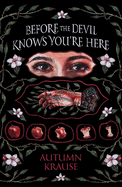
| Publisher: | Peachtree Teen | |
| Genre: | Horror, Dark Fantasy, Country & Ethnic, Fantasy, Young Adult Fiction, United States - 19th Century, Historical, Fairy Tales & Folklore | |
| ISBN: | 9781682636473 | |
| Pub Date: | October 2023 | |
| Price: | $18.99 |
| Children's & Young Adult |
by Autumn Krause
Autumn Krause's sophomore YA novel is a dark, lush, original folktale told from two perspectives: Mexican American teen Catalina, a girl searching for the Man of Sap, and John, who, through his misfortune, becomes the Man of Sap.
In a broken-down shack in early-19th-century Wisconsin, Catalina's father is killed, and her brother, Jose Luis, is kidnapped by the Man of Sap, a man/tree creature who, "sowing seeds of sin... grows apples of ash." Seventeen-year-old Catalina is determined to rescue Jose Luis, her only surviving family member. Woven alongside Catalina's third-person odyssey is the first-person tale of John, an apple farmer whose dream of a thriving orchard led him to sign a deal with the devil. Krause (A Dress for the Wicked) invents here an original folktale that is part Johnny Appleseed, part "The Devil and Daniel Webster," and uses dual narratives to tell two distinct, engrossing stories that intertwine in unexpected ways. Her prose is descriptive and delicate, her mythical world populated with creatures both intriguing and terrifying. --Deanna Meyerhoff, reviewer
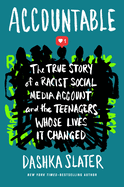
| Publisher: | Farrar, Straus and Giroux | |
| Genre: | School & Education, Young Adult Nonfiction, Social Topics, Prejudice & Racism | |
| ISBN: | 9780374314347 | |
| Pub Date: | August 2023 | |
| Price: | $20.99 |
| Children's & Young Adult |
by Dashka Slater
Award-winning journalist Dashka Slater (The 57 Bus) brilliantly dissects a true-crime story, exhibiting its different parts for readers, and presenting a balanced narrative that illustrates the nuances inherent in all interpersonal interactions, whether in person or online. Accountable centers on a teen's private social media account, where he posts racist and sexist content for the entertainment of his friends.
Charles, a 17-year-old Korean American, created what his male friends viewed as a humorous meme, then started a private Instagram account to feature memes like the first--actually a racist attack on a classmate. The account didn't remain private for long. The exposure of the content set off a series of events that embroiled parents, students, and staff in the ugliness of Charles's online activity. While readers' instinctive response may be to say Charles deserves what he gets, Slater's meticulous research from multiple perspectives highlights the difficulties of attempting to define absolute right and absolute wrong. Slater does not solve problems or answer the questions; instead, she scrupulously illustrates the complexity of this case, and reminds the audience that there are no quick fixes. --Jen Forbus, freelancer
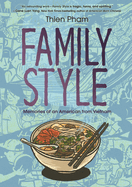
| Publisher: | First Second | |
| Genre: | People & Places, Cooking & Food, Young Adult Nonfiction, United States - Asian American & Pacific Islander, Social Topics, Comics & Graphic Novels | |
| ISBN: | 9781250809728 | |
| Pub Date: | June 2023 | |
| Price: | $17.99 |
| Children's & Young Adult |
by Thien Pham
Family Style by Thien Pham (Level Up illustrator) is a moving, insightful graphic memoir that shares the Vietnamese refugee experience through food. At five years old, Thien Pham and his family fled Vietnam for Songkhla refugee camp in Thailand, where they waited for passage to the U.S. Pham doesn't remember much from that treacherous trip, but he does remember the rice ball his mother gave him. Pham's early life in the U.S. is recalled through the food he associates with the time, such as the potato chips that marked the day when his family became "officially American."
These food memories are cyclical, beginning with Vietnamese dishes, like bánh cuốn, then moving to American ones, like steak and potatoes, and returning to the rice and fish from his first memory, showing the influence of both cultures on Pham's life, but also the struggle of feeling in-between cultures. Pham's impactful text is paired with evocative digital woodblock-style illustrations in panels outlined with a thick black line and arranged like a storyboard. An enlightening and hopeful memoir. --Lana Barnes, freelance reviewer and proofreader
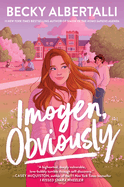
| Publisher: | Balzer + Bray | |
| Genre: | Friendship, Romantic Comedy, Romance, Contemporary, Social Themes, Young Adult Fiction | |
| ISBN: | 9780063045873 | |
| Pub Date: | May 2023 | |
| Price: | $19.99 |
| Children's & Young Adult |
by Becky Albertalli
Becky Albertalli (Kate in Waiting) is known for her warm and insightful stories about queer teens finding self-acceptance and first love. Her sixth solo novel (and a Kids Indie Next List pick), Imogen, Obviously, is both a sparkling romance and a moving account of a young woman's very contemporary bisexual awakening. Eighteen-year-old Imogen Scott, who is "hopelessly, blindingly, obviously straight," nervously agrees to pretend to be her best friend Lili's bisexual ex for a weekend. When Imogen meets Lili's college friend, dark-haired lesbian Tessa, she feels an instant attraction. A single weekend makes Imogen question if her sexuality might not be so obvious after all.
Imogen, Obviously portrays the Internet-era nature of discrimination against bisexual women through the eyes of one such young woman. Albertalli empathetically considers the nuance of queer identity and the harm caused by gatekeeping who is allowed to identify as LGBTQ+. Imogen, Obviously is a deeply personal novel about queerness in all its colorful complexity, and a rallying cry to "hold space for variation" in the LGBTQ+ community. --Alanna Felton, freelance reviewer

| Publisher: | Graphix/Scholastic | |
| Genre: | Dating & Relationships, Adolescence & Coming of Age, General, Social Themes, Juvenile Fiction, Comics & Graphic Novels | |
| ISBN: | 9781338818796 | |
| Pub Date: | August 2023 | |
| Price: | $15.99 |
| Children's & Young Adult |
by Jessica Walton and Aśka
Stars in Their Eyes by Jessica Walton (Introducing Teddy) and Aśka (This Is Not a Book) is a delightful graphic novel that sweeps up readers in an intense, whirlwind queer romance. Six years ago, 14-year-old Maisie had cancer and a lower-leg amputation. Now she spends a lot of her time managing pain flares, and "super-inspired" people who are impressed when she does everyday things. Maisie is excited to attend her first fancon, where she meets 15-year-old Ollie, a cute nonbinary volunteer. When Maisie takes a timeout, Ollie tags along, and the pair quickly become "comfy" with each other.
Walton adeptly uses their lived experiences as a disabled, bisexual, nonbinary person to explore queerness, disability, and anxiety. They show the issues some disabled people regularly face through Maisie's inaccessible hotel bathroom and phantom limb pain. Aśka's artwork expresses Walton's text with accuracy and breadth, while adding to the humor and joy with bright colors and visual insider jokes. Winsome art combined with Walton's joyful, charming story creates a celebration of identity, community, and love. --Lana Barnes, freelance reviewer and proofreader
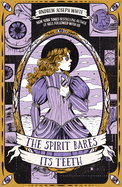
| Publisher: | Peachtree Teen | |
| Genre: | Paranormal, Occult & Supernatural, Fantasy, Young Adult Fiction, Historical, LGBTQ+ | |
| ISBN: | 9781682636114 | |
| Pub Date: | September 2023 | |
| Price: | $19.99 |
| Children's & Young Adult |
by Andrew Joseph White
Andrew Joseph White's sophomore novel, The Spirit Bares Its Teeth, is a riveting, spellbinding Victorian horror about a neurodivergent trans boy desperate to escape the life his family has planned for him.
Sixteen-year-old Silas has violet eyes that allow him to interact with spirits by lifting the Veil between the mortal world and the spirit world. Silas sees this ability as a curse and wishes he could live as his true self and become a surgeon. His parents, though, exploit his power and force him to suppress his trans identity. After an unsuccessful attempt to avoid an arranged marriage, Silas is diagnosed with "Veil sickness" and forced into an abusive sanitorium for violet-eyed medium girls.
White shows in this sharp, tense novel the same kind of visceral prose that garnered such acclaim for his debut, Hell Followed with Us. He paints an authentic and painfully tender portrayal of Silas's neurodivergent and trans identities in this Kids Indie Next List pick. The plot's candid, often gory accounts parallel the stunningly rendered characters whose physical and emotional wounds bleed out onto the pages. --Kieran Slattery, freelance reviewer, teacher, co-creator of Gender Inclusive Classrooms